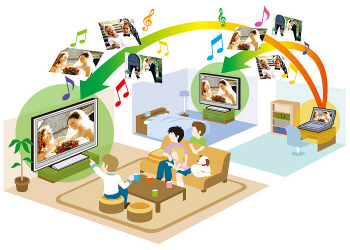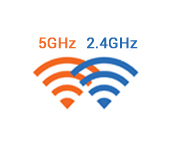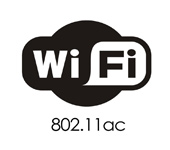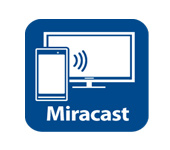Dlna Technology. Using Dlna on Smart TVs and Other Devices

DLNA technology literally stands for Digital Living Network Alliance, which means “Digital Living Network Alliance”. The solution deservedly enjoys widespread popularity, especially with the launch of functional Smart TVs and the latest generation of game consoles.
This technology allows to unite home PCs, smartphones, laptops, TVs and other DLNA-enabled devices into a single local group for quick access and interaction with data of different sizes and formats. Simply put, to share movies, music and photos.
This solution has become very convenient, providing maximum comfort in the process of working with content. A significant plus can be considered almost complete automation of all network settings, which makes this technology available and easy to use for any user, without requiring special knowledge. DLNA provides comfortable viewing on a large TV screen of a movie downloaded from the Internet to a computer or tablet, eliminating the need for direct connection to a display device or recording the file on a medium. It’s just as easy to print a photo on a compatible printer directly from a DLNA-enabled camera. This bypasses downloading the photo to a computer and makes the process quick and affordable.
DLNA technology is being actively developed, supported and promoted by the world’s leading companies and software developers who are creating and deploying numerous digital devices, constantly endowing them with ever-increasing capabilities. DLNA support is now realized in many such products from the most famous global corporations. The total number of companies in the DLNA-enabled device manufacturers’ alliance exceeds the 250-member mark.
How does DLNA technology work?
DLNA technology partially utilizes UPnP protocols and is a set of defined standards that makes it possible to receive and transmit, as well as play and display a variety of multimedia content between compatible devices. Such transmission is realized through the use of a home local IP network and allows you to view images, listen to music content, watch live video and perform other operations that are functionally available to devices on a shared network.
The connection itself can be realized either through Ethernet connection via wire or completely wireless using wi-fi. Each device involved in such a network receives its own individual address.
In order to make it possible to connect digital devices via DLNA, it is necessary for such devices to support this technology. DLNA-enabled devices are certified and bear the “DLNA CERTIFIED” logo. If you have such devices, the last link is the presence of a router (through which the connection will go) or wires for Ethernet connection.
We recently wrote about Miracast wireless technology. They are somewhat similar, with the help of Miracast you can also display an image from a phone, tablet, or laptop, but with DLNA we can watch only some specific content (movie, photo, listen to music), and Miracast displays everything that we see on the screen. And for DLNA to work, the devices must be connected through one router, directly with a network cable, or via wi-fi Direct. With Miracast, devices are connected directly via wireless technology.
All DLNA-enabled devices fall into three categories.
- The first is Home Network Devices. These are NAS, TVs, media players, music centers and printers.
- The second category is Mobile Handheld Devices. This refers to a range of mobile devices, including smartphones, portable music players, camcorders and cameras, tablets, etc.
- The third category was Home Interoperability Devices. Such devices allow you to convert content and have the implementation of support for additional communication standards.
It is worth noting separately that DLNA capabilities on mobile devices can be very limited. Let’s take a closer look at how DLNA works on the example of a compatible laptop and a Smart TV, which are connected to a home network via a router.
The first thing to do is to switch the devices and make the necessary network settings. The final result will be that the TV will be able to access the files that are stored on your laptop in the standard user folders “my videos/audio/photos”. Manufacturers often provide a special program that allows you to manage these files from your TV remote. If you do not want to store available content in these default folders, then you need to turn your PC into a home media server using another program (Home Media Server (UPnP, DLNA, HTTP) is a good program). This is the one that will provide content from your PC or tablet to other DLNA devices on your home network.
DLNA technology is actively used by many manufacturers of digital devices and equipment, but has different names. The list includes Intel, Sony, Matsushita, Microsoft, Nokia, Philips, Hewlett-Packard, Samsung and many other brands. Korea’s Samsung calls the technology AllShare, its competitor LG called the solution SmartShare. Philips has picked up a similar Simple Share, and the famous Apple has labeled DLNA technology with the name AirPlay.
Afterword
The user-friendliness of DLNA technology cannot be underestimated. On the modern market we can observe a steadily growing number of devices from different brands with DLNA support, many manufacturers around the world are working tirelessly to improve the technology and software, so today DLNA is definitely a relevant and quite promising solution.
But there are technologies that are better than DLNA in terms of functionality. This is, for example, Miracast technology, when devices are connected directly, not through a router. And Miracast allows you to display on the big screen not only media content, but absolutely everything you see on the screen of your device.




 What is a Two-Band Wi-Fi Router (Dual-Band Wi-Fi)?
What is a Two-Band Wi-Fi Router (Dual-Band Wi-Fi)?  802.11AC-New Wi-Fi Standard
802.11AC-New Wi-Fi Standard  What is Miracast? ABOUT MIRACAST Technology on Mobile devices and TVS
What is Miracast? ABOUT MIRACAST Technology on Mobile devices and TVS